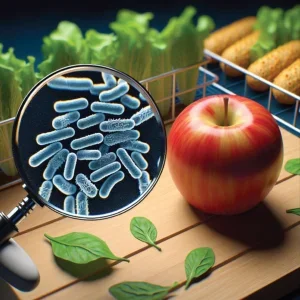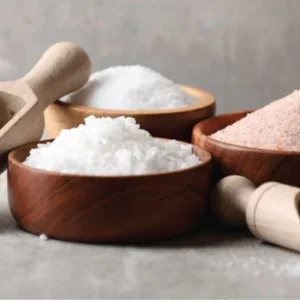
The idea that milk is healthy used to be as close to a nutritional truism as you were likely to get. Considered an indispensable source of calcium, which in turn was key to bone development, dairy products were viewed as essential to a balanced diet. Think of the debacle that ensued in the 1970s when Margaret Thatcher cut free school milk, earning her the famous moniker of ‘milk snatcher’.
Western nutritional orthodoxy is still very much in support of dairy. Since 2005, the US Department of Agriculture (USDA) has recommended three servings of dairy products a day. This is an increase from the historical food-pyramid recommendations, which advised two servings a day for adults. It brings the US into line with the Canada, Australia and France, which have had three-a-day programmes in place for years.
The USDA’s latest tip sheet, revised in January this year, says that low-fat or fat-free dairy foods are critical for providing calcium, vitamin D, potassium, protein and other nutrients needed for good health throughout life. It also states: "Dairy foods are especially important to build the growing bones of kids and teens. Eat or drink low-fat or fat-free dairy foods with meals and snacks – for everyone’s benefit".
Of course, the nutritional composition of milk is not in doubt; it provides protein and various micronutrients. However, an increasing number of nutritionalists believe that its benefits have been oversold. Take the Harvard School of Public Health, which has a healthy eating plate and pyramid of its own. Though similar in most respects to the USDA’s version, it omits a dairy category altogether.
The Harvard advice states that, while calcium is important, milk isn’t the only – or best – source of it. It goes on to state that while calcium can indeed lower the risk of osteoporosis and colon cancer, a high intake is associated with an increased risk of prostate and possibly ovarian cancer. In addition, dairy products are often high in vitamin A, which "at high levels can paradoxically weaken bones".
Bafflement and disappointment
Public Health England has caused similar controversy with its latest ‘Eatwell’ guidelines, released at the start of the year. These guidelines suggest that only 8% of a person’s total energy intake should come from dairy products, down from 15% in the previous guidance. This figure has angered Dairy UK, which claims the decision is "baffling and disappointing". A spokesperson for Public Health England said that the results were fully based on evidence.
Plenty of studies cast doubt on dairy’s benefits. For instance, a growing body of research has called into question the links between milk and strong bones. A major US study, which tracked over 75,000 women for 12 years, found that participants who drank two or more glasses of milk a day had a greater risk of hip fracture than the rest of the cohort.
Then there are studies exploring the incidence of brittle bones in different cultures. It is now well established that regions with the highest dairy consumption also have the highest rates of bone fractures, with puzzlingly good bone health observed elsewhere. This relationship has been christened ‘the calcium paradox’.
When approached by Ingredients Insight for comment, WHO said of the phenomenon: "WHO does not provide recommendations on specific food commodities per se, such as dairy products."
However, its recommendations for preventing osteoporosis cast some light on the conundrum. These state that while "calcium is one of the main bone-forming minerals and an appropriate supply to bone is essential at all stages of life", requirements might vary between countries for dietary, genetic, lifestyle and geographic reasons. For instance, more calcium might be required in countries with a higher animal-protein intake, to offset the negative impacts of such consumption.
"To date, the accumulated data indicates that the adverse effect of protein, in particular animal (but not vegetable) protein, might outweigh the positive effect of calcium intake on calcium balance," suggests the guidance.
Another major point of contention is the digestibility of milk. It is only over the last few thousand years, since the dawn of agriculture, that some humans have developed an enzyme capable of digesting milk sugars past their childhood years.
Even now, the enzyme (lactase) is only common in certain areas of the world, with many ethnic groups (such as Asian and African populations) remaining predominantly lactose-intolerant. Because this applies to over 60% of the world’s population, it doesn’t make much sense to peg milk as an essential global superfood.
Alyssa Hamilton’s book Got Milked?, published in 2015, casts a damning eye over the dairy industry, arguing that its marketing strategies have pulled us into what she calls "the great dairy deception". She claims that milk’s privileged position in the North American diet is exclusionary, given the high rates of lactose intolerance among non-white ethnic groups. She also denounces the idea that dairy comprises a food category in itself.
"Milk having special status as a calcium source makes as much sense as pumpkin seeds being a food group because they’re high in magnesium," she said in an interview with Canadian magazine Macleans.
Influence and investment
It seems unlikely that a consensus on these issues will be reached any time soon. The dairy industry wields considerable influence and has invested heavily in public health campaigns. For instance, the Dairy All-Party Parliamentary Group in the UK recently released a report that intends "to put dairy back on the daily menu". This calls for a three-a-day dairy programme "to remind consumers of the unique nutritional value of dairy products".
The report’s foreword explains: "The dairy industry has long played an important role in helping to feed the people of the UK. At a time when it needs strong support and tangible solutions to help weather the storm of volatility, it is disheartening to hear negative or misleading messages about the benefits of milk and dairy products."
Milk consumption is falling in the US, too, with the average American drinking about 40% less than they did in 1970, even though sales of yoghurt and cheese have risen.
This has driven the dairy industry to change its methods. Many milk companies have been pushing chocolate milk, for instance, containing added protein and marketed as recovery fuel for fitness buffs. This enables them to tap into a growing market of sports supplements and protein shakes. The UK report also points to the electrolytes present in milk, dubbing it "nature’s own sports drink".
Other companies, meanwhile, have created ‘lactose-free’ milks for those who are lactose-intolerant. Rather than taking the lactose out, which would be impracticable, manufacturers add the enzyme lactase, with the addition of which the lactose is hydrolysed into glucose and galactose, simple sugars the body can absorb, eliminating gastrointestinal symptoms.
Meanwhile, the market for non-dairy milk substitutes is growing. According to a new report by BCC Research, the global milk-alternatives market is expected to increase from $5.8 billion in 2014 to $10.9 billion in 2019, reflecting a CAGR of 13.3%. This market can be divided into four categories: soy milk, almond milk, rice milk and others (coconut milk, oat milk and hemp milk).
Almond power
For many years, soy milk was the undisputed market leader, to the point where USDA guidelines use fortified soy interchangeably with dairy. However, in recent years, the market for soy milk has stabilised, fuelled in part by worries over its phytoestrogen content, and in part by the range of newer options. While it is still by far the largest category worldwide, reflecting its popularity in Asia, many ‘health food’ proponents in Western countries have moved on.
Soy now faces a rival in the form of almond milk, which accounts for 4.0% of US milk sales, up from 0.5% just five years ago. In October 2015, British retailer Waitrose confirmed that almond milk had overtaken soy milk as its customers’ preferred alternative to dairy.
Reporting this news, the Guardian pointed out that while "almonds are one of the healthiest foods you can eat", it may be disingenuous to expect the same benefits from their milk. Many brands boast an almond content of just 2%, which means consumers are only getting around a seventh of the protein of cow’s milk. They also contain added sugar, along with various stabilisers and emulsifiers, and may be lacking in vitamins and minerals.
Helen Bond, spokesperson for the British Dietetic Association, told the Guardian: "Dairy is a really great source of a readily available form of calcium, so you need to look for plant-based milk that is fortified with calcium."
The race is on, then, for a non-dairy substitute that can truly offer the same benefits as milk. Ripple Foods, a California-based start-up, is working on a sustainably produced substitute based on pea protein, which contains as much protein as cow’s milk while supplying 45% of a person’s daily calcium needs. Having amassed $15 million in venture capital funding during 2015, the founders believe their product could revolutionise the industry.
"We’re going after the alternative dairy market," one of the founders, Neil Renninger, told the Wall Street Journal. "Right now, there aren’t any real quality products out there in the alternative dairy space."
Dairy substitutes is clearly an important market segment, with a growing number of food entrepreneurs and technologists seeking to capitalise on demand. However, it pays to remember that many foods offer similar nutritional benefits without competing directly with dairy products.
Calcium from plant-based food, for example, tends to be well absorbed by the body, without being mitigated by calcium-leaching animal protein. Leafy greens are a good source of the mineral, with a cup of cooked kale containing the same amount of absorbable calcium as a cup of cow’s milk.
AJ Lanou wrote in the American Journal of Clinical Nutrition in 2009: "Instead of drinking milk, individuals should focus on bone building through exercise, spending time in the sunshine to promote vitamin D production, eating lots of fruit and vegetables, and getting calcium from plant sources."
Even for the staunchest defender of dairy products, milk is not a panacea, but should form part of a balanced diet and healthy lifestyle if its putative benefits are to be realised. As the debate rumbles on and consumption patterns change, food manufacturers should stay vigilant: there may be important marketing opportunities for dairy products and the growing array of alternatives.






